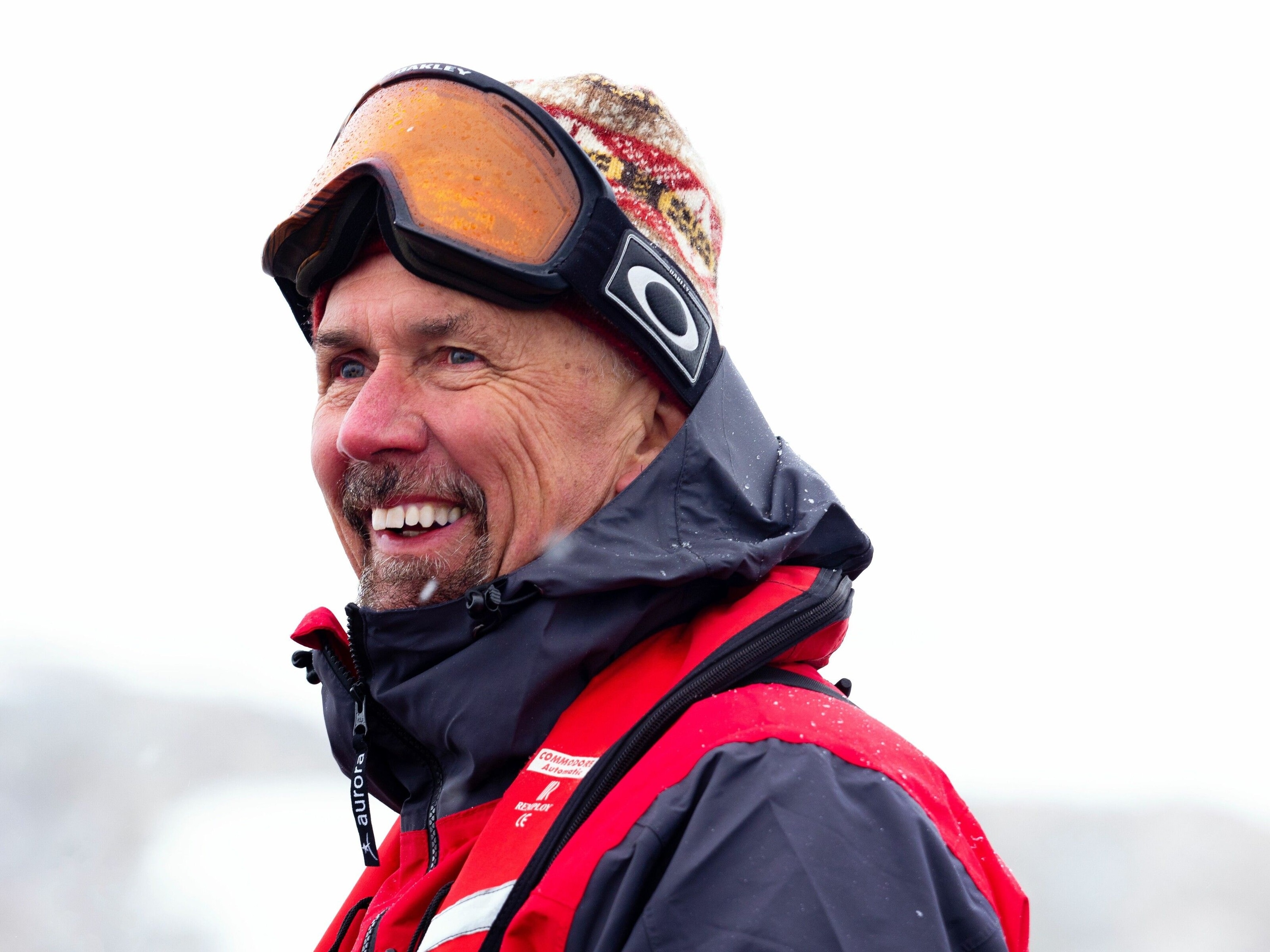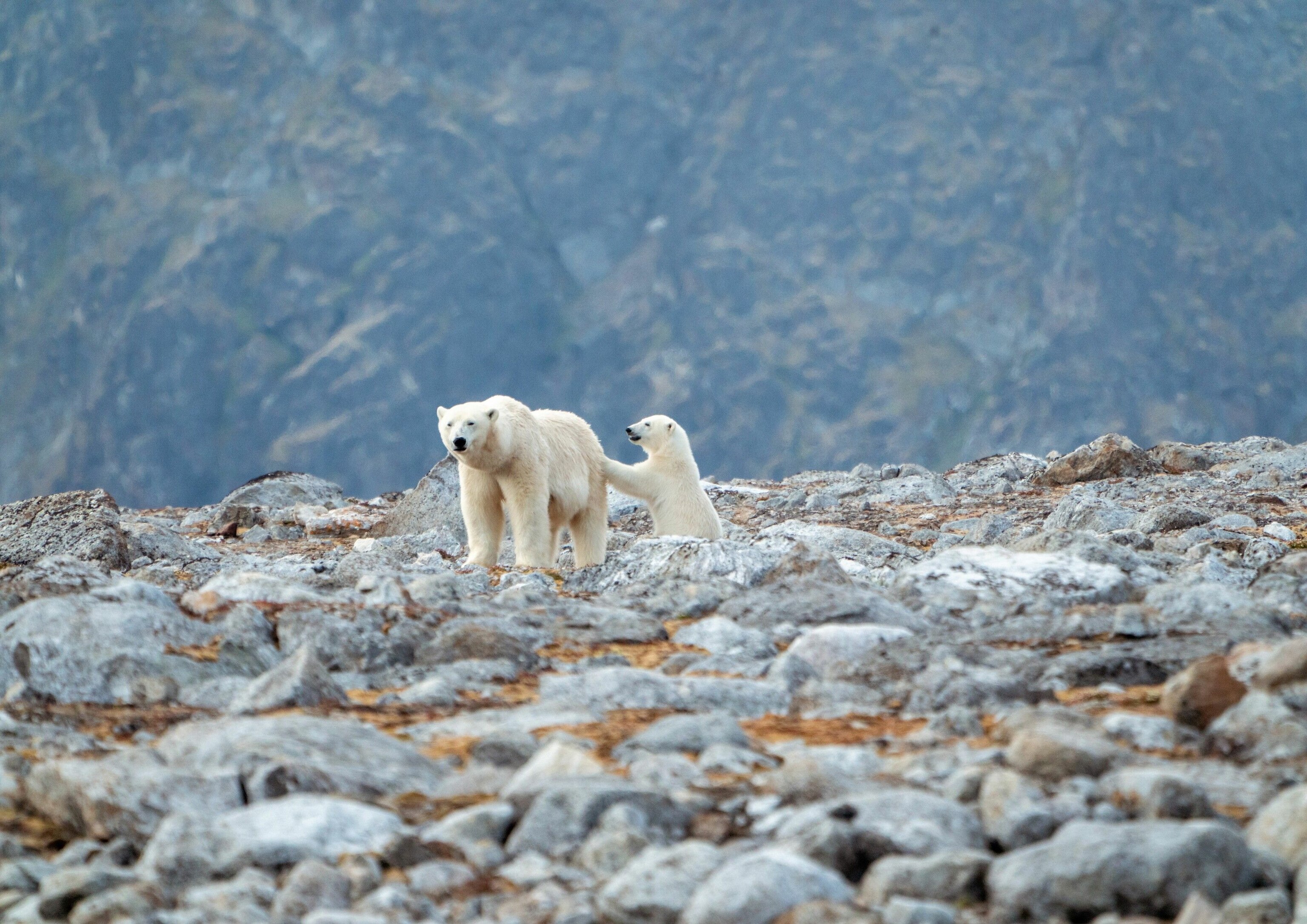
What we can learn about challenging conditions and adventures from an expedition leader
Howard Whelan, expedition leader at Aurora Expeditions, discusses his favourite places in the Arctic, walking from Canada to Mexico, and the biggest challenge of his career.
Where did your love of adventure and exploration come from?
Growing up in the Wasatch Mountains of Utah, my parents allowed me to catch the bus to go skiing on my own when I was six years old. My father was a keen hiker, and in the summer I’d go off on my own to explore. We also moved a few times and I think this instilled in me a great sense of curiosity, which has enabled me to travel the world and share my love for discovery as an expedition leader.
What's been your most impressive expedition?
Walking the Pacific Crest Trail from Canada to Mexico when I was 19 years old. It was 1973 and only a few people had succeeded in walking the entire trail. The first month in the North Cascades was so difficult that I almost quit. But I stuck it out, thanks to advice from my father, who suggested I just take it a day at a time. This got me through that rough patch and I was fine from then on. Aside from that, the walk also taught me that I’m capable of accomplishing goals beyond my imagining. It taught me to aim high and have the confidence to believe that I would develop the skills necessary to succeed. I've been privileged to have worked for Aurora for 27 years and guided guests on over 90 expeditions, providing them with lifelong memories.
Describe your proudest moment as a guide.
The first time I led the Aurora Shackleton Crossing of South Georgia. Sir Ernest Shackleton was a hero of mine and it was thrilling to follow in his footsteps and share this experience with our passengers. We had challenging ice conditions on the Crean Glacier, some of the strongest winds I’ve encountered anywhere and difficult route finding, yet we made it safely to the abandoned whaling station of Stromness. That evening we raised our glasses to toast Shackleton at his gravesite in Grytviken.

How about your most challenging moment?
While attempting the first winter crossing of the Hokkaido’s central mountains, my mates and I were caught out by a massive blizzard. The winds were too strong to put up a tent, so we dug a snow cave, which partially collapsed in the night. While digging it out, I went outside to shift the snow from the tunnel and the slope above me slid and carried me down, partially burying me. Fortunately, my right hand was free, so I was able to clear my face and dig myself out. I had to climb back up and into the snow cave until the blizzard eased enough to get out, and I suffered from claustrophobia for some time afterwards. These challenges have provided me with the experience and expertise required to guide our passengers on the most amazing discoveries and expeditions, with their safety at the forefront of our journeys.
Where are your top three favourite places in the Arctic region?
1. Scoresbysund, East Greenland: besides being the birthplace of some of the most spectacular icebergs on Earth, it features dramatic landscapes of rock faces more than 1.25 miles high, fantastic red sandstone islands and tundra walks past palaeo-Eskimo sites, across wildflower and berry patches where musk ox and polar bears roam. You can experience this on Aurora’s Jewels of the Arctic 15 Day or Arctic Complete from 24 Days voyages.
2. Nordaustlandet, Svalbard: home to the third largest ice cap on Earth (after Antarctica and Greenland), this massive island separates the wildlife-rich mountains of Spitsbergen with the polar desert to the east. Nordaustlandet’s eastern side has been rarely visited due to pack ice, but as the ice recedes, more of its coast and islands, including the easternmost Kvitoya, are opening up to further exploration. You can explore this region on one of Aurora’s Svalbard voyages, Svalbard Odyssey 12 Days, Svalbard in Depth 15 Days or Jewels of the Arctic 15 Day.
3. Wrangel and Herald Islands, Chukotka: as the only place in the Arctic Basin that wasn’t covered in ice during the last Ice Age, it has tremendous biodiversity. Although these two adjacent islands are best known as having the highest density of polar bear dens in the world (last time I was there, I saw 65 bears in one day) it’s also renowned for its birdlife including snowy owls, one of my favourites.

And what’s at the top of your expedition wish list?
Alpine touring in Queen Maud Land, Antarctica. It looks otherworldly.
Do you have a favourite Arctic animal?
Polar bears, particularly mothers with cubs. I could spend hours watching mischievous cubs harass their long-suffering mothers, hoping for more attention. This Arctic season, we were privileged to have seen numerous bears on several voyages.
Is there a sight or an experience in the Arctic region that you’ll remember for the rest of your life?
Visiting Uelen village on the north coast of Chukotka, Siberia, on the day of a walrus hunt. Between about 9am and 2pm, hunters in skin boats dispatched seven large walruses, towed them ashore and used a small bulldozer to pull them above the tide line. Within minutes everyone aside from school age children showed up and butchered the animals, distributed the meat and left very little but bloodstains on the cobbled beach. There was an air of celebration as the village was guaranteed meat for the oncoming winter.

What do you love most about your job?
The wild places we visit, the amazing expedition team at Aurora I work with, the buzz in the bar when all our expedition members share the rush of the day’s adventures with our expeditions. Oh, and driving Zodiacs to spectacular sites along the way.
For more information and details on upcoming expeditions, visit auroraexpeditions.co.uk. Read more about Howard here.
Follow National Geographic Traveller (UK) on social media






